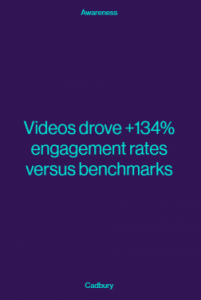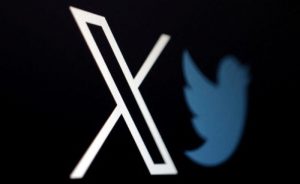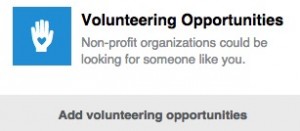As the head of talent at CapitalG, Alphabet’s $4 billion independent growth fund, Lauren Illovsky helps guide the firm’s portfolio companies as they scope out executive level hires and fill out their boards. Illovsky sees her role as absorbing—and solving—any challenges they’re facing in the talent department.
“I always tell them if something’s keeping you up in the middle of the night, don’t let it—call me, text me, send me an email, and let’s solve it together. I may not have the answer, but I’ll find someone who does,” Illovsky says. “I joke [that] my major is anything and everything executive talent [and] org design, and my minor is anything below the executive layer: broader team-building, HR, things like that.”
That expertise has been particularly crucial in the past few years, as tech companies big and small have cycled through acute periods of hiring and seemingly endless rounds of layoffs in the face of economic pressures. Since last fall, tech companies have cut more than 330,000 jobs, according to Layoffs.fyi.
As we approach the end of the year, there are plenty of companies still conducting layoffs, but Illovsky says others—especially the type of high-growth startups backed by CapitalG—are slowly reinvesting in hiring and retention. Illovsky talked to Fast Company about how tech companies are recovering from the tumult of the past few years, what she’s seeing in the hiring market, and how return-to-office policies are redefining company culture.
It has been a difficult few years with respect to recruiting and talent management, but 2023 in particular has been a bit of a roller coaster. The wave of layoffs we saw earlier this year has slowed down to some extent, but it still seems like it’s a tough time for talent. What’s your take on the current job market and state of hiring?
I don’t think it’s that different than it has been for a very long time. We’re just comparing it to this incredible hype cycle, where there was so much hiring, and that power shifted so much to the candidates and to the employees. There are still an absolute ton of open roles [and] hiring. But companies are not as desperate to get butts in seats as they were the last five years.
We’re coming off this period of extreme volatility in hiring—a lot of highs and lows. Right now we’re kind of somewhere in the middle, where it depends a little bit on the function. It’s really tempting to say: Engineering hiring is the same as it’s always been! But there’s very little broad generalization that can be made right now. There’s concrete dollars and outcomes [being] assigned to hiring, which is excellent. It’s really nice to see that come back; getting that rigor and hygiene back is critical. So [companies] are still hiring. And as you see in the news, they’re still firing.
A lot of recruiting teams took a big hit when companies conducted layoffs. But it sounds like you’re saying companies are reinvesting in that department?
It’s very company-specific. There isn’t one functional area that’s being overhired right now. It’s really kind of even across the board, at least for VC-backed high-growth companies. People still need engineers, sales leaders, and [recruiters]. If anything, there’s a tiny shift toward agencies [doing] recruiting versus bringing them in-house—because it’s a little bit cheaper to not have to pay for an internal team of recruiters. And executive recruiting has completely roared back. Companies are being really thoughtful about hiring at the executive level; they’re working with search firms [and] scoping out roles.
Obviously a lot of the conversation around layoffs and talent has focused on what’s happening at large tech companies. What are we missing about the rest of the industry?
When you look at what bigger companies are doing versus smaller companies, they typically pull from different candidate pools [and] talent roles. So it’s very hard to compare them. Big companies often make decisions that are pretty opaque to the market. So they make a lot of decisions, and we have no idea what’s driving that. There could be a new product area; they could be losing leadership. You never know. Smaller companies have a different charter. They usually have a smaller subset of products—or product—that they’re working on, and they have a different goal. In some cases, it’s just finding product market fit [or] getting their first 100 customers. Whatever their goal is, they’re hiring for that. So it’s a little bit easier to understand and generalize in the smaller companies because there’s a lot more of them, and it’s easier to pattern match.
What do you find companies tend to get wrong when recruiting for more junior employees and entry-level roles?
There are so many areas within this to talk about. It can be very, very tempting for companies to hire a bunch of early-career engineers [or interns]. If the infrastructure isn’t there to manage them, that’s a challenge. When companies either don’t onboard correctly or they want to be too flat, they can miss out on that management. That’s one.
Two, I think, is not putting an identity around the work culture. If you are a company that wants everybody in person and in the office, there is absolutely a place for that. Where they might miss is making exceptions and hiring people into remote roles, who are now facing a challenge; they might feel excluded, and then they’re already starting from behind.
And then third is when they hire outside of what’s really important to them as a company. What I mean by that is: Yes, we need people in every function and of every style. But every company should have core tenets that are really, really important to them that they’ve hired around—whether it’s collaboration and communication, or whether it’s [being a] mission-driven company. Those kinds of cultural elements should be discussed in interviews, so that you are also attracting and getting candidates excited based on the cultural piece because they’re more likely to stick around and really work hard and be great employees.
You spend a lot of time helping companies with executive search. Would you say the challenges companies face with C-suite hires mirror their struggles with recruiting other talent?
It all kind of comes together. Those core tenets become even more important at your C-suite. If you hire executives who don’t match up to those [tenets], that can be really challenging. But sometimes, someone may not be highly collaborative or highly communicative, [for example], and perfect for that role—and you have to figure out what the ramifications are of hiring that person.
The other big misses at the C-level for me are making sure that the scope of the role is written out and explained before you go to market. It’s very tempting just to hire somebody based on gut, or based on an intro. There’s absolutely a place for having a gut feel around a hire. But there also needs to be a critical scope of what we need. Do we need product marketing? Do we need them to be an excellent leader? What scale do we need them to have worked at? Which leads me to the other big issue that CEOs run into. They try to hire for a 5-year or 10-year horizon versus just 18 to 24 months. Companies change so rapidly when they’re in a high-growth stage. Say you’re a $50 million revenue company right now, and you need someone to go to $150 [million]. Hire for that. Don’t hire someone to take you to $500 [million]. Maybe it’s the same person—but maybe it’s not.
We have to be open-minded to the fact that there are going to be different executives for different stages of the company. We have to be really thoughtful and think about the C-suite as an ever-evolving organism versus this very static group of people who are going to be successful no matter what.
But is that approach at odds with building longevity and creating pathways for employees to grow and find new opportunities within the company?
Well, we see great companies retain people for the long run because they provide those executives with the tools to scale past where they might have [topped] out. That’s where we see amazing executive coaches come into play; we see mentors [or] a personal board of advisors for executives. A leader can scale if they have an amazing team under them, and they’re aware of it. That leader who might have only gone to $150 [million]? If they take a hard look at themselves and work with a coach and work with the CEO, and they say, “You know what? I really need to build my muscle in this area, or my people-management skills could use work.” That’s going to allow them to keep growing and allow that longevity.
[It’s also] very function-specific. I’d say [with] marketing, you can sometimes be more restricted on scale. But engineering? If they’re an excellent manager, and they’ve put the resources in place, and they’re open, you can absolutely continue to scale past that. This is how people get a shot at bigger stages. Some companies will say, we need a pre-IPO CFO; then they realize the sitting CFO is doing an amazing job, so they say let’s give the CFO a chance. But again, we want to think in that 24-month period. And if we are pleasantly surprised? Awesome.
We’ve now seen many companies botch the return to office, often because they didn’t communicate their policies properly to employees. Some companies hired a lot of remote talent during the pandemic and are now expecting employees to not only commute into the office, but also work in an environment that isn’t conducive to the hybrid model. What are companies getting wrong, and what should they be doing differently?
It’s similar to almost any other internal company policy. If it’s miscommunicated or mismanaged, it will go wrong. Now, unlike other policies—and there are absolutely other policies as divisive—companies tend to take a very strict stance [on RTO]. What needs to be made clear is the expectation. There needs to be a lot of clarity and a lot of communication, and there needs to be a purpose. Employees want the “why” right now. The talent who’s looking at the company—they [also] want to know.
In some companies, we have seen that there is a different expectation for the C-suite than the rank-and-file employees. And that’s always been an issue. It is very important for companies to communicate: “Our company is in New York and our CRO is in Utah. [But] our CRO is on the road every week, Monday through Thursday. It doesn’t matter where they’re based because they are on the road.” It’s always been the case that field reps have been spread out; they need to be close to customers. So there [have] always been exceptions.
Even when you say everyone is in office—well, what does that mean? Do we have pods? Does it mean everybody is assigned to a desk they need to be at? If you are bringing everybody into the office, everybody needs to have a space to work. Make sure you’ve got ergonomics involved; make sure they’ve got the right size monitor. All the stuff that helps them do their work, you need to provide for them in the office. If you’re a fully remote firm, say: “What would help you be more productive at home?” All company policies should have a purpose. But again, if you’re a company where absolutely everybody is on the phone alone—all the time—why bring them into the office? Think about what works for the company. It should be a very thoughtful part of building a company.
As popular as remote work and hybrid models are, not everyone wants to work from home. How would you say those preferences are influencing talent recruitment—or is it too early to say? Do you find most people want to be in a hybrid workplace? Are there differences between executive search versus middle-management or entry-level roles?
There have always been people who want to move outside of major hubs, for whatever reason. One of the beautiful things about remote work and hybrid work is it’s allowed people to take care of their families and their livelihoods, and really feed some energy into [other] parts of the country. It’s really freeing for a lot of people. They need their livelihood, but they also have responsibility.
There’s also [another] subset of the population, me being one of them: moms of little kids. For me, it’s less about being in the office or being remote as it is around aggressive flexibility. I need to be able to take my kid to the doctor. To compare that, I can think of a few female executives who I admire and love who would never work from home if you paid them to. They drop their kids off [and] work all day, and that is what they want. More than anything, it’s about being able to customize your day to your needs, and I think that’s really what people are looking for. It’s not so much that they want in-office or hybrid or home—it’s that they want to be able to customize their work to how they work best, and to their family obligations or personal obligations.
But I do wonder if companies that are very rigid about the return to office will, on the whole, find it more difficult to retain senior employees. What do you think this all means for hiring and retention in the long run?
I think it’ll work itself out because there’s always a bit of matching that goes on—and a little supply and demand issue. One of our portfolio companies, Everlaw, is in office, and it’s been great for them culturally. They’ve managed to stay really true to what they’re trying to build. And it hasn’t hurt their ability to attract talent at all; their executive team is phenomenal, and their employees are great. They’ve got a really cool office here in Oakland. [There are] absolutely going to be people for everything. There have always been remote companies; there have always been in-person companies. People have always moved for jobs. Back in the day—in the ’80s and ’90s—in order to really move up through a corporation, you had to move around. That was the culture for those companies. I think the culture for this wave is yet to be defined.
(11)
Report Post







